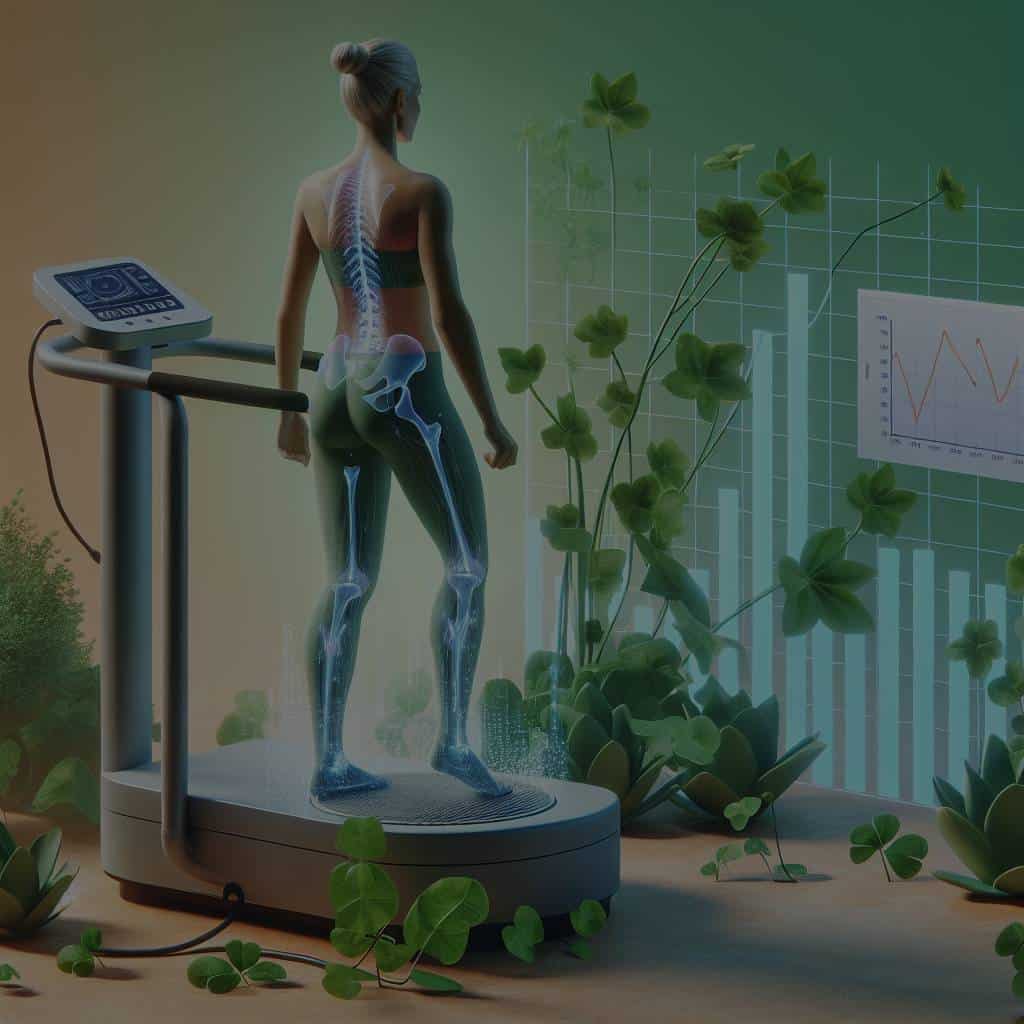What Are the Effects of Whole-Body Vibration Training on Bone Density in Postmenopausal Women?

As the human body ages, it undergoes various changes. One of the more significant and impactful changes for women is menopause, which can lead to numerous health issues, including osteoporosis. Osteoporosis is a condition characterized by a decrease in bone mineral density (BMD), leading to frail bones that are more prone to fractures. Many studies have looked into various ways of combating osteoporosis, with exercise often touted as a viable option. Recently, a new form of exercise, called whole-body vibration (WBV) has emerged as a potential solution. This article will delve into the effects of WBV training on BMD in postmenopausal women, based on various scholarly studies indexed on Google Scholar.
Delving Into Whole-Body Vibration (WBV) Training
Whole-body vibration (WBV) training is a type of exercise that requires individuals to stand, sit or lie on a machine with a vibrating platform. The theory is that as the machine vibrates, it transmits energy to the body, forcing it to perform a series of rapid contraction and relaxation muscle reactions. As such, WBV is said to stimulate muscles in a way similar to traditional strength training exercises, but with less physical effort required.
A lire aussi : Can the Practice of Urban Beekeeping Improve Environmental Awareness and Community Health?
Several studies have been conducted to investigate the impact of WBV on various health parameters, including body composition, muscle strength, and most relevant to our discussion, bone mineral density. The results, however, have been mixed, prompting further research and debate among scholars.
The Relationship Between WBV and Bone Mineral Density
Several studies have sought to illuminate the effects of WBV on bone mineral density (BMD). BMD is a key indicator of bone health, with lower levels being associated with a higher risk of osteoporosis and fractures. In the context of postmenopausal women, this is particularly significant as menopause is known to trigger a rapid decrease in BMD.
Lire également : How Does Night Shift Work Affect Hormonal Balance and What Are Effective Coping Strategies?
In exploring the relationship between WBV and BMD, studies often involve two groups of participants – a control group and a WBV group. The WBV group undergoes regular WBV sessions, while the control group does not. Both groups are then assessed for changes in BMD over a set period of time.
The Effects of WBV on BMD in Postmenopausal Women: What the Studies Say
Research on the effects of WBV on BMD in postmenopausal women has yielded mixed results. Some studies have found positive effects, while others have found no significant differences between WBV and control groups.
One study of postmenopausal women, for instance, found that after six months of WBV training, the WBV group saw a significant increase in BMD in the hip region compared to the control group. This suggests that WBV could potentially be an effective tool for enhancing BMD in postmenopausal women.
However, other studies have found no significant effects of WBV on BMD in postmenopausal women. In a different study, postmenopausal women underwent WBV training for a year but showed no significant improvements in BMD compared to the control group. These divergent results underscore the need for further research into the effects of WBV on BMD in postmenopausal women.
Whole-Body Vibration Training: An Alternative Exercise for Osteoporosis?
Given the mixed results of studies on the effects of WBV on BMD in postmenopausal women, the question remains: is WBV training an effective alternative exercise for osteoporosis?
Some scholars argue that while WBV may not significantly increase BMD, it could still offer other benefits. For example, WBV has been found to improve muscle strength and balance, which are crucial for preventing falls and fractures in older women. Furthermore, because WBV requires less physical effort than traditional strength training exercises, it may be a more feasible option for individuals who find regular exercise challenging.
On the other hand, critics point out that the evidence supporting WBV as an effective tool for enhancing BMD in postmenopausal women is still inconclusive. This is due to the mixed results of studies and the fact that different studies use different WBV protocols, making it difficult to compare results.
In conclusion, while WBV training might offer certain benefits, whether or not it is an effective tool for enhancing BMD in postmenopausal women remains an open question. Further high-quality, large-scale randomized controlled trials are needed to definitively answer this question. Until such evidence is available, it is recommended that postmenopausal women follow the current guidelines for osteoporosis prevention and treatment, which include a balanced diet, regular weight-bearing exercise, and, if necessary, medication.
The Challenging Factors in Whole-Body Vibration Training Studies
The exploration of whole-body vibration (WBV) training as an intervention for bone health in postmenopausal women presents several challenges. Notably, the mixed outcomes from various studies could be attributed to factors such as the different protocols used and individual differences among the participants.
For instance, studies can vary greatly in terms of the frequency and intensity of the WBV, the duration of the intervention, and the specific WBV devices used. This makes it difficult to compare results across studies. Additionally, individual differences among participants, including their initial bone health status, physical activity level, diet, and genetic factors, can also affect the outcomes.
Other factors that may influence the effectiveness of WBV training include the site of BMD measurement. Most studies measure BMD at the hip or lumbar spine, although some also take measurements at the femoral neck. This is significant as the effect of WBV on BMD may vary depending on the specific bone site.
Some studies also suggest that the effects of WBV training might be greater in younger women compared to those in their postmenopausal years. A meta-analysis published in Bone Miner Res indicated that premenopausal women might gain more benefits from WBV in terms of bone mass compared to postmenopausal women. This suggests that WBV might be more effective in preventing bone loss during the younger years rather than reversing it later in life.
Conclusion: The Need for Further Research on WBV and Bone Health
In conclusion, the effects of whole-body vibration (WBV) training on bone mineral density (BMD) in postmenopausal women remains a topic of ongoing research. The mixed results of studies to date indicate the complexity of this issue, as there are many factors that can influence the outcomes, including the specifics of the WBV protocol and individual characteristics of the participants.
Despite the challenges, the potential benefits of WBV training should not be overlooked. Even if its impact on BMD is not as significant as hoped, it might still offer other health benefits, such as improved muscle strength and balance. These aspects are crucial for the overall wellbeing and quality of life in postmenopausal women.
Looking ahead, more high-quality, large-scale randomized controlled trials are needed to clarify the effects of WBV on BMD in postmenopausal women. Such studies should aim for consistency in WBV protocols and include a diverse range of participants to account for individual differences.
In the meantime, postmenopausal women are advised to adhere to the established guidelines for osteoporosis prevention and treatment. This includes engaging in regular physical activity, maintaining a balanced diet, and taking prescribed medication if necessary.
